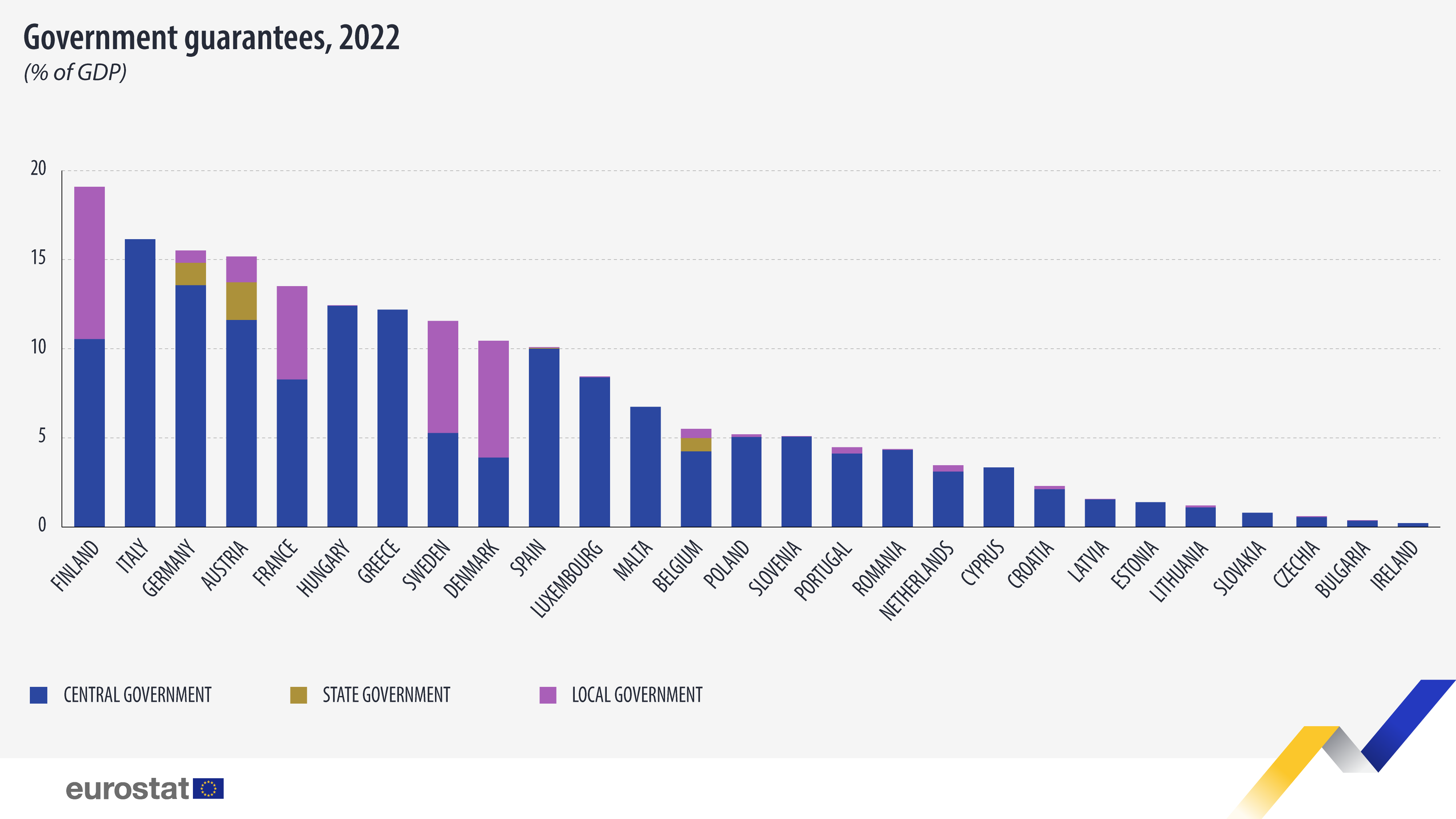The most common form of contingent liabilities in the EU countries is government guarantees on liabilities, and occasionally, on assets of third parties. In 2020 and 2021, government guarantees provided in the EU increased substantially following the onset of the COVID-19 pandemic. In 2022, the level of government guarantees was further influenced by the ensuing energy crisis, following the Russian aggression against Ukraine.
In 2022, the highest overall rate of government guarantees was recorded in Finland (19.1% of GDP), Italy (16.3%), Germany (15.5%), Austria (15.2%) and France (13.5%). On the lower end of the scale, rates of less than 1% of GDP were recorded in Ireland, Bulgaria, Czechia and Slovakia.
This information comes from data on contingent liabilities and non-performing loans published by Eurostat today. This article presents a handful of findings from the more detailed Statistics Explained article.
Source dataset: gov_cl_guar
In most EU countries, the central government is the predominant guarantor. A notable level of local government guarantees can be seen in Finland, Denmark, Sweden and France. In several countries, a major part of the guarantees is provided to financial institutions – notably in Finland, Greece, France, Luxembourg, Belgium and Hungary – often granted in the context of either the COVID-19 crisis or the 2008-09 financial crisis. A significant amount of the guarantees provided during the COVID-19 crisis were in the form of standardised guarantee programmes, i.e., a large number of similar and relatively small ticket-size guarantees, such for example as guarantees for loans to small and medium-sized enterprises.
Liabilities of public corporations highest in Greece
The level of liabilities of public corporations classified outside general government in 2022 varied widely across the EU countries. Significant amounts of liabilities were recorded in Greece (144.1% of GDP), ahead of the Netherlands (93.5%), Germany (88.4%), Luxembourg (72.0%) and France (67.5%).
In contrast, amounts of less than 10% of GDP in public corporation liabilities were recorded in Spain (4.2%), Slovakia (4.9%), Romania (7.6%) and Cyprus (8.8%).

Source dataset: gov_cl_liab
The main reason for the high level of liabilities in certain EU countries is that the data include liabilities of public banks controlled by government. Most of these liabilities consist of deposits held by households or other private or public entities. In general, financial institutions have much higher amounts of debt liabilities compared to the non-financial corporations. At the same time, these institutions have also significant amount of financial assets, which are not captured in this data collection.
Cyprus remained the country with the highest level of non-performing loans
In 2022, Cyprus remained the country with the highest stock of non-performing loans (assets) of the general government, at 15.4% of GDP, followed by Croatia and Portugal, both with a share of 1.0%.
Portugal and Slovakia with largest liabilities related to off-balance PPPs
In 2022, liabilities related to off-balance public-private partnerships (PPPs, long-term construction contracts where assets are recorded outside government accounts) were below 2% of GDP in all EU countries. Nine EU countries had no such liabilities. Portugal had the highest share (1.7% of GDP), followed by Slovakia (1.3%) and Hungary (0.7%). These PPP liabilities are predominantly due to motorway projects.




